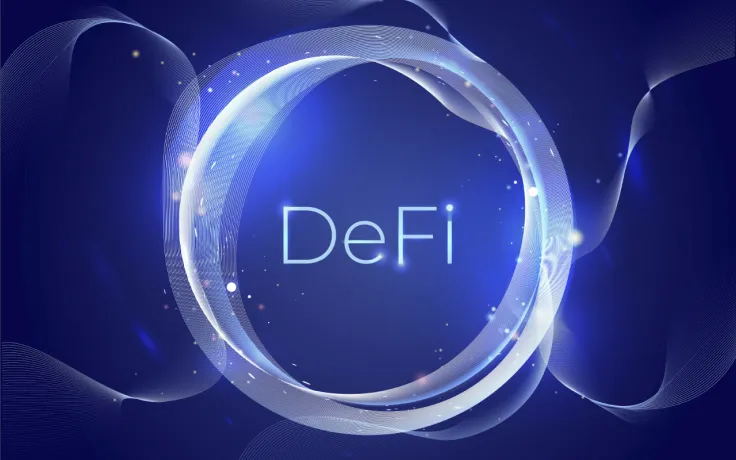
The world of Web 2.0, based on the internet and characterized by centralization, is quickly changing into Web 3.0, based instead on the blockchain and characterized by its inherent decentralization. DeFi, GameFi, and SocialFi are all part of this incredible new world. Although the momentum and development of Web 3.0 is strong, it’s still in its early stages, and right now the construction of traditional business on the platform is the primary goal.
Currently the blockchain encounters certain problems, such as inadequate performance and an insufficient amount and quality of functions. With the continued progress of Ethereum 2.0 and the ongoing improvement of emerging public chains, performance problems on the blockchain are gradually being solved. However, there are still many shortcomings in the current functions. The difficulty for traditional business to migrate to the chain at a low threshold is one of such issues plaguing the current model. Functions that exist on the current internet such as collaboration and governance meet the requirements of traditional businesses. Governance in particular only supports voting. So infrastructure projects have been developed to support the operation, collaboration, and construction of traditional businesses and emerging blockchain projects. This article will briefly introduce those.
Encentive: Making DEX Construction Easier
Encentive is committed to bridging the blockchain operation model from Web 2.0 to Web 3.0, building an ecosystem of freely circulating assets through multi-directional modules and components. The project will help communities, projects, users, and even traditional businesses quickly and efficiently acquire operational capabilities such as fission marketing. Encentive itself offers a large number of decentralized operation tools, including Layer 2 nodes, an operation tool template library, DAO governance, Encentive UI, Encentive SDK, and more.
Through Encentive UI and Encentive SDK, developers will enjoy a low threshold for building new applications, or migrating existing applications to the chain. Via functions provided by Encentive and the graphical interface of DAO governance, developers can directly use operational functions while simultaneously interacting directly with contracts so that only a small amount of code is needed to integrate operating modules into existing Web 3.0 applications. Through Encentive’s DAO governance module, a customized governance framework can be built which includes basic DAO functions such as asset management, voting contract management, and authority management.
Encentive provides in-depth operation support. The project is capable of customizing commonly used project team operation functions such as point tasks, cross-chain burning, project promotion, staking, and embedding into the DAO framework- all according to specific project or business needs and characteristics. By combining with the Web 3.0 resource market, it also meets the needs of project teams for the development of customized operation functions and obtains external promotional resources.
Encentive itself is built on Ethereum, and further improves efficiency and reduces transaction costs through Layer 2 technology. Encentive has further reduced the obstacle of acquiring customers in the early stages of traditional businesses and emerging blockchain applications, and has significantly reduced the pain points of operating on such high thresholds. Encentive will further reduce the development threshold of these applications to promote the progress of Web 3.0
Additionally, Encentive can also provide developers with tools to develop their DEX by providing them with components.
Encentive provides a simple solution to developers for the creation of a DEX.
Since Encentive provides users with audited smart contracts as well as functions such as cross-chain burning, staking, and DEX creation, B-end users only need to invoke the corresponding contract to complete operations, including issuing a DEX.
In Encentive V2.0, Encentive will launch the DEX publishing function. By doing so, developers on the B side only need to follow Encentive’s prompts to enter the name of the new DEX, platform currency, platform logo, and the initial trading pairs to be included, as well as initial liquidity. In a few simple steps, developers can create a smooth functioning and attractive DEX.
By using Encentive, the period of time required to develop a DEX has dropped to less than ten minutes.
NULS: More Inclined to “Chain Creation”
NULS, the veteran blockchain technology, and its ecology was in its infancy as early as 2017. NULS is still regarded as one of the technologies facilitating Web 3.0 and is inclined towards “chain creation”.
As a customizable blockchain infrastructure, NULS is committed to building a multi-chain parallel and value-interconnected blockchain ecological network.
NULS features services such as smart contracts, microservices, rapid chain creation, cross-chain interoperability, and asset insurance. Even users without a sturdy code foundation can create a customized blockchain through Chain Factory and NULS’ ChainBox, easing the convenience of the creation of proprietary blockchains for many enterprises.
The NULS community also introduces microservice thinking in the design of the underlying infrastructure of the blockchain, designing software applications as independently deployable service suites, and introducing the most advanced ideas of the architecture design into the module, so that modules act as programs that start independently and are overall very flexible. Under this architecture, the coupling between modules is smaller. Multi-language development greatly improves the contribution of the code and the convenience of the users. At the same time, it is easier to expand and add on to. The modules even support distributed deployment, and the plugging and unplugging of modules is convenient and easy.
NutboxDAO: DAO Operating System for Web 3.0
Nutbox consists of three main sections: crowd-staking, governance, and DAO services. Nutbox provides developers with a series of open source plug-in systems which are highly flexible and extensible, and which adapt to DAOs in different Web 3.0 scenarios. Crowd-staking is a way to empower DAO value based on the staking economy. Holders of pledged assets can vote for community nodes or delegate the right to use pledged assets to the community to obtain DAO tokens.
Modern DAO can carry out DAO governance through the community proposal system and the community committee. This governance model effectively utilizes the advantages of decentralized governance and committee governance. DAO services are driven by the foundation, and the DAO flourishes and even incubates completely supported service function products to provide services to community members and other users.
Loopring Protocol LRC: Of Recent Interest and Gaining Steam
LRC is a DeFi infrastructure technology belonging to an established project. The Loopring protocol uses zero-knowledge proof technology to solve the bottleneck of Ethereum’s low throughput and high costs, allowing anyone to build high-throughput low-cost, non-custodial, order book-based decentralization on the Ethereum trading platform.
Loopring’s DEX supports traders in accurately analyzing K-line charts, order books, price trends, and set prices. With the improvement of performance and experience, as well as transactions done on decentralized exchanges, the Loopring protocol can provide services such as mortgage lending, asset issuance, and contract transactions the likes of which are seen on centralized exchanges. Many traditional businesses are expected to build their own DEX through the LRC protocol to further develop their business. Of course, the Looopring Agreement also needs to be used in conjunction with other technologies to meet such demands.
The above-mentioned infrastructure tools have their own strengths, but when compared with these tools we see that Encentive can provide the most extensive and comprehensive support in both development and operation, and is a promising infrastructure ecosystem. The technologies and tools of Web 3.0 are in a state of constant improvement, and it’s therefor foreseeable that traditional businesses built on the blockchain will also receive more and more in-depth support.
 Dan Burgin
Dan Burgin Vladislav Sopov
Vladislav Sopov U.Today Editorial Team
U.Today Editorial Team